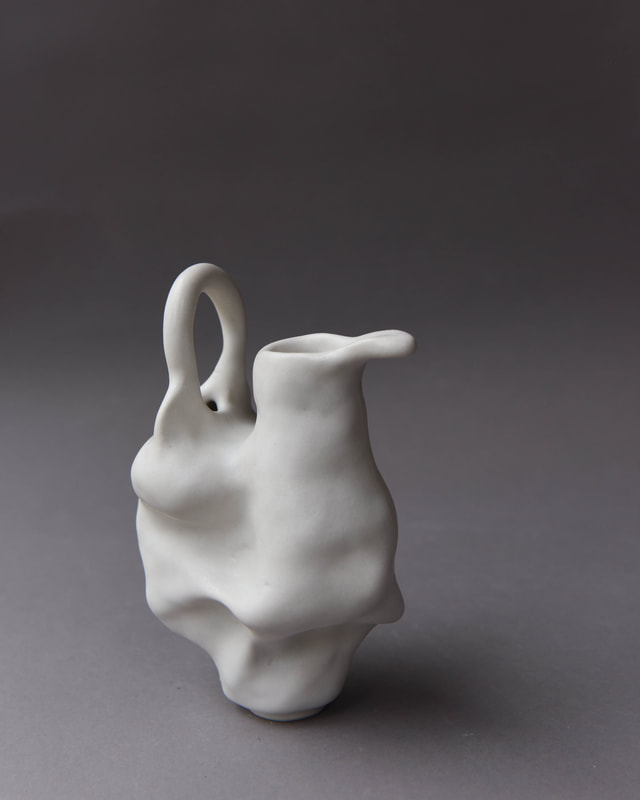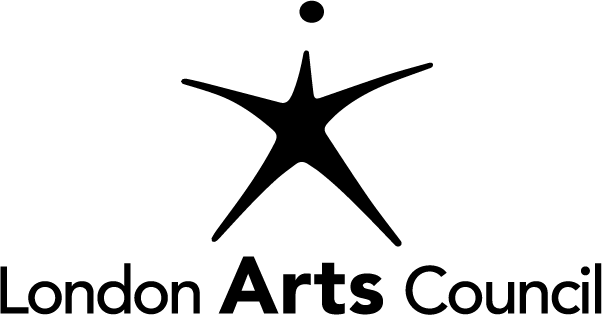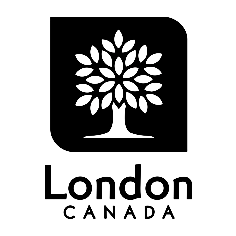Peculiar Object #14, Stoneware, 4.5"x2"x6," 2021
ECH: Tell us a little about yourself.
I was born and raised in Tehran. As a child, I was drawn to literature and arts, but did not have the opportunity to study or work in these fields. My only exposure to the world of visual arts was an apprenticeship at my local photo lab. I graduated from engineering schools and immigrated to Canada. After working for several years in the engineering field, I finally decided to pursue my dream of studying art and I was accepted to do my BFA at OCAD University. I graduated in 2020.
ECH: Briefly describe your art practice.
My practice is focused on the human condition. Growing up in Iran, the highly political atmosphere of society and constant turmoil in the region manifested itself in my childhood memories. I remember the Islamic revolution of 1979 and the Iran-Iraq war of 1980-88 including mass arrests of political activists, widespread imprisonments and executions with no fair trial. I lived through constant bombings in my hometown and had friends who volunteered to become child soldiers in the war. The Orwellian censorship imposed on my generation and the constant religious propaganda throughout my early education has made me a vigilant observer of the intimate moments between horror and humour.
My recent solo exhibition, To Defy: On Resistance and Resilience is a body of work inspired by my personal experience of war, violence and censorship. Through writing, printmaking, multimedia, and sculpture, I explore modes of storytelling in which narrative is embedded into the artwork. By sharing my memories from a child’s point of view, I try to convey these stories in a deeply human and universal language, avoiding the cliché of shock and horrors of war on one hand, and the abstract notion of war far away on the other hand. With the global rise of oppressive politics, I believe telling the stories of trauma and perseverance is relevant more than ever.
I was born and raised in Tehran. As a child, I was drawn to literature and arts, but did not have the opportunity to study or work in these fields. My only exposure to the world of visual arts was an apprenticeship at my local photo lab. I graduated from engineering schools and immigrated to Canada. After working for several years in the engineering field, I finally decided to pursue my dream of studying art and I was accepted to do my BFA at OCAD University. I graduated in 2020.
ECH: Briefly describe your art practice.
My practice is focused on the human condition. Growing up in Iran, the highly political atmosphere of society and constant turmoil in the region manifested itself in my childhood memories. I remember the Islamic revolution of 1979 and the Iran-Iraq war of 1980-88 including mass arrests of political activists, widespread imprisonments and executions with no fair trial. I lived through constant bombings in my hometown and had friends who volunteered to become child soldiers in the war. The Orwellian censorship imposed on my generation and the constant religious propaganda throughout my early education has made me a vigilant observer of the intimate moments between horror and humour.
My recent solo exhibition, To Defy: On Resistance and Resilience is a body of work inspired by my personal experience of war, violence and censorship. Through writing, printmaking, multimedia, and sculpture, I explore modes of storytelling in which narrative is embedded into the artwork. By sharing my memories from a child’s point of view, I try to convey these stories in a deeply human and universal language, avoiding the cliché of shock and horrors of war on one hand, and the abstract notion of war far away on the other hand. With the global rise of oppressive politics, I believe telling the stories of trauma and perseverance is relevant more than ever.
ECH: What role does your cultural identity play in your work?
My work has been mostly based on my personal experience, and of course cultural identity plays a huge role in it.
ECH: As a person of colour, what challenges do you face navigating the art world?
The separation of arts and crafts in late renaissance, created a two-tier “high art” and “material arts” in the west. This separation became more problematic when Europeans encountered “oriental” cultures of Asia and the Middle East and “new world” civilizations of the Americas. Through the colonial mindset, westerners saw Arabic calligraphy, Persian ceramics, or beadworks of the Indigenous people in America, things of the past. To put it in plain words, these were the artefacts of dead cultures, worthy of anthropological museums and not contemporary art scene. Sadly, this outdated, Eurocentric view still exists in the artworld today. I like to challenge this Eurocentric world of western art.
ECH: Could you share a little bit about your experience during the pandemic?
It was a shock of course, watching all of my shows being canceled and all the post-graduation job opportunities being evaporated. But after realizing this is going to be a long marathon-like challenge, I focused on creating a home studio for my arts and crafts practices. After several months of working hard, I finally have a functional ceramic studio. I’m very excited to focus on creating new series of artworks.
ECH: If any, can you tell us about your connection/experience/history with the Embassy Culture House?
I collaborated with my good friend and brilliant artist Niloufar Salimi. She introduced me to the Embassy Culture House and I am very thankful for that. I’ve met so many wonderful artists in such short period of time. I’m looking forward to seeing their work and being inspired by them.
ECH: Do you think a dedicated “Asian Heritage Month” in Canada is still relevant? If so, could you give an example of how it is a benefit to you and the general public? If not, could you offer an alternative approach for rethinking this month and/or raising awareness of Asian cultural issues?
[I don’t think I am qualified to answer this question specifically, but here are some thoughts on Asian Heritage in general]: I think raising awareness of cultural issues in general is extremely valuable to Canadian society, which thrives on multi-culturalism. Asia is a vast stretch of land from Turkey to Japan, and is home to several distinct cultures. We need to define what “Asian Heritage” means, and display its wonderful diversity, particularly through public art.
My work has been mostly based on my personal experience, and of course cultural identity plays a huge role in it.
ECH: As a person of colour, what challenges do you face navigating the art world?
The separation of arts and crafts in late renaissance, created a two-tier “high art” and “material arts” in the west. This separation became more problematic when Europeans encountered “oriental” cultures of Asia and the Middle East and “new world” civilizations of the Americas. Through the colonial mindset, westerners saw Arabic calligraphy, Persian ceramics, or beadworks of the Indigenous people in America, things of the past. To put it in plain words, these were the artefacts of dead cultures, worthy of anthropological museums and not contemporary art scene. Sadly, this outdated, Eurocentric view still exists in the artworld today. I like to challenge this Eurocentric world of western art.
ECH: Could you share a little bit about your experience during the pandemic?
It was a shock of course, watching all of my shows being canceled and all the post-graduation job opportunities being evaporated. But after realizing this is going to be a long marathon-like challenge, I focused on creating a home studio for my arts and crafts practices. After several months of working hard, I finally have a functional ceramic studio. I’m very excited to focus on creating new series of artworks.
ECH: If any, can you tell us about your connection/experience/history with the Embassy Culture House?
I collaborated with my good friend and brilliant artist Niloufar Salimi. She introduced me to the Embassy Culture House and I am very thankful for that. I’ve met so many wonderful artists in such short period of time. I’m looking forward to seeing their work and being inspired by them.
ECH: Do you think a dedicated “Asian Heritage Month” in Canada is still relevant? If so, could you give an example of how it is a benefit to you and the general public? If not, could you offer an alternative approach for rethinking this month and/or raising awareness of Asian cultural issues?
[I don’t think I am qualified to answer this question specifically, but here are some thoughts on Asian Heritage in general]: I think raising awareness of cultural issues in general is extremely valuable to Canadian society, which thrives on multi-culturalism. Asia is a vast stretch of land from Turkey to Japan, and is home to several distinct cultures. We need to define what “Asian Heritage” means, and display its wonderful diversity, particularly through public art.



















